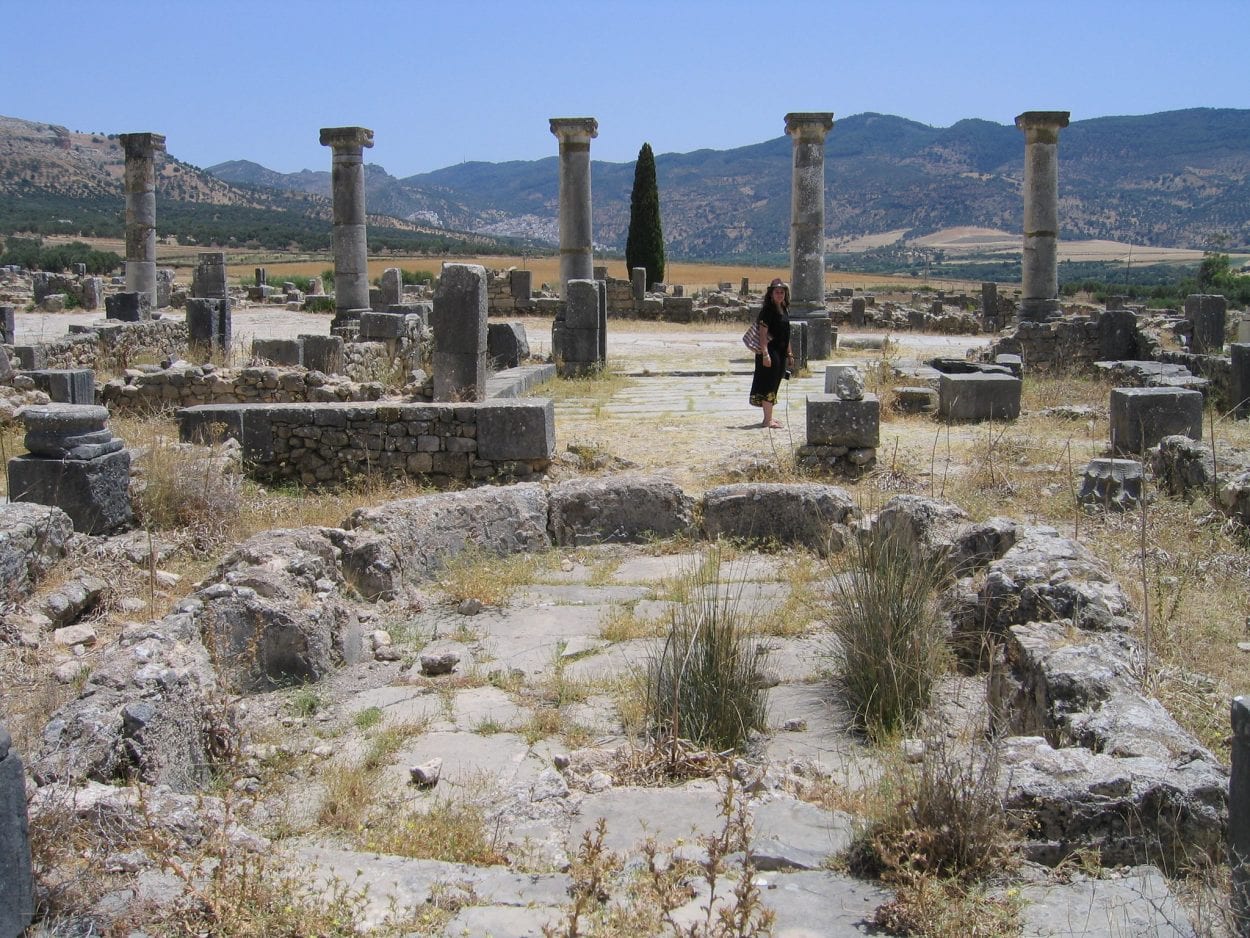Volubilis is an archaeological site and ancient Berber city that many archaeologists believe was the capital of the Kingdom of Mauretania.
The city is located on a ridge above the valley of Khoumane at the foot of the Zerhoun mountain in modern-day Morroco.
The earliest occupation dates from the Neolithic period around 5000 years ago, evident by the discovery of Late Atlantic Neolithic pottery discovered in situ. By the 3rd century BC, the Carthaginians had established a proto settlement and constructed a temple dedicated to the Punic god Baal.
After the fall of Carthage at the end of the third Punic War in 146BC, the Kingdom of Mauretania emerged that stretched from central present-day Algeria westwards to the Atlantic, covering northern Morocco, and southward to the Atlas Mountains.
The inhabitants were seminomadic pastoralists with Berber ancestry who were a culture with the ethnicity of several nations, mostly indigenous to North Africa and some northern parts of West Africa.
The Kingdom became a client state of the Roman Republic, but maintained many Punic influences, such as the magistrates retaining the Carthaginian title of suffete. Volubilis developed into a city during the reign of Juba II, a client-King of Rome who was first married to Cleopatra Selene II, daughter of Egyptian Queen Cleopatra VII of Ptolemaic Egypt and Roman Triumvir Mark Antony. Although Juba was a Berber prince from Numidia, he was influenced by Roman art and architecture which he adopted into the construction of the city.
In AD 44, Emperor Claudius annexed Mauretania and established the Roman provinces of Mauretania Tingitana and Mauretania Caesariensis. Volubilis became a centre of trade, exporting commodities such as grain, olive oil, and wild animals for arenas across the Empire. This allowed the city to grow substantially, and by the end of the 2nd century AD, Volubilis had a population of around 20,000 inhabitants, was raised in status to a municipium, and covered an area of around 98 acres.
Rome’s control of Volubilis ended during the Imperial Crisis (AD 235–284), when the Roman Empire almost collapsed leaving most of Mauretania abandoned from AD 280.
The city was renamed around AD 708 to Oualila and was inhabited by the Awraba, a Berber tribe from Libya.
By this time, the Roman structures were mostly ruins and the city was used as a cemetery. Volubilis remained the capital of the region well into the Islamic period and people continued to live in Volubilis for several more centuries, it was probably almost deserted by the 14th century.
Header Image Credit :
